Imagine All of Us Coming Together to Wonder

The beginning of the school year marks a time of wonder: What will this class of children be like? Where will our studies, interests, and projects take us? What surprises will we encounter along the way? This year, as I worked to set up a classroom environment to welcome our 3rd graders, I had many questions. In the past few years at Opal School, I had looped with students, so starting the year still signified a time of curiosity and wondering but it was marked by a collection of existing knowledge about and relationships with students. Now, I had a class that was entirely new to me, as were most of their families.
As we dove into the year together, I was immediately struck by students’ curiosity, knowledge of scientific phenomena, artistic interests, and kindness to one another. A day did not go by without my observing a sweet exchange between students, powerful conflict resolution strategies, or engagement with materials. At the same time, I began to notice something else that made me curious and worried and at the same time, excited about our work together. I noticed that many students liked to be certain, they liked to be sure of what they were talking about. When they were confident in their thinking, they would talk (or write) considerably. Once students gave a lengthy diatribe on the pathways and communication systems of the brain. Another student insisted that the moon was full LAST night and not tonight as I had written on the board as part of our greeting. However, when I posed questions about which they were less certain, even framed in such a way to alleviate pressure of being right or wrong, I encountered silence.
This intrigued me. Over the summer, I had read Jamie Holmes’s new book Nonsense: The Power of Not Knowing, which presents all kinds of stories and information on the benefits of learning to not just live with but embrace more uncertainty in our lives. I was curious about how the children felt and what strategies they had for situations when they didn’t have an answer right away, especially because I didn’t necessarily want answers right away, and certainly not the sense that there was a “right” answer. Some students told me that the whole point of learning was to arrive at the “right” answer. I wondered what experiences might help them get more comfortable with trying out ideas before feeling certain, to try taking risks to say, “I’m not sure but I think _____ because ______.” I worried about the tendency to share only when feeling certain – how would that impact both the speaker and the rest of the students in the class? Because certainty can shut down thinking and diminish the ability to seek out different perspectives—a core value of our work at Opal, I want to cultivate a culture of thinking that allows for all kinds of possibilities, for thinking to inspire more thinking, and for us to be able to wonder together.
Full of curiosity, I began experimenting with different experiences to see if we could nudge students away from the need to be certain and toward habits of curiosity, asking questions, and considering possibilities. I had started my year wondering about these students and ended up exploring wonder within the first few weeks of school.
We cracked open the word wonder together to see what lives inside.
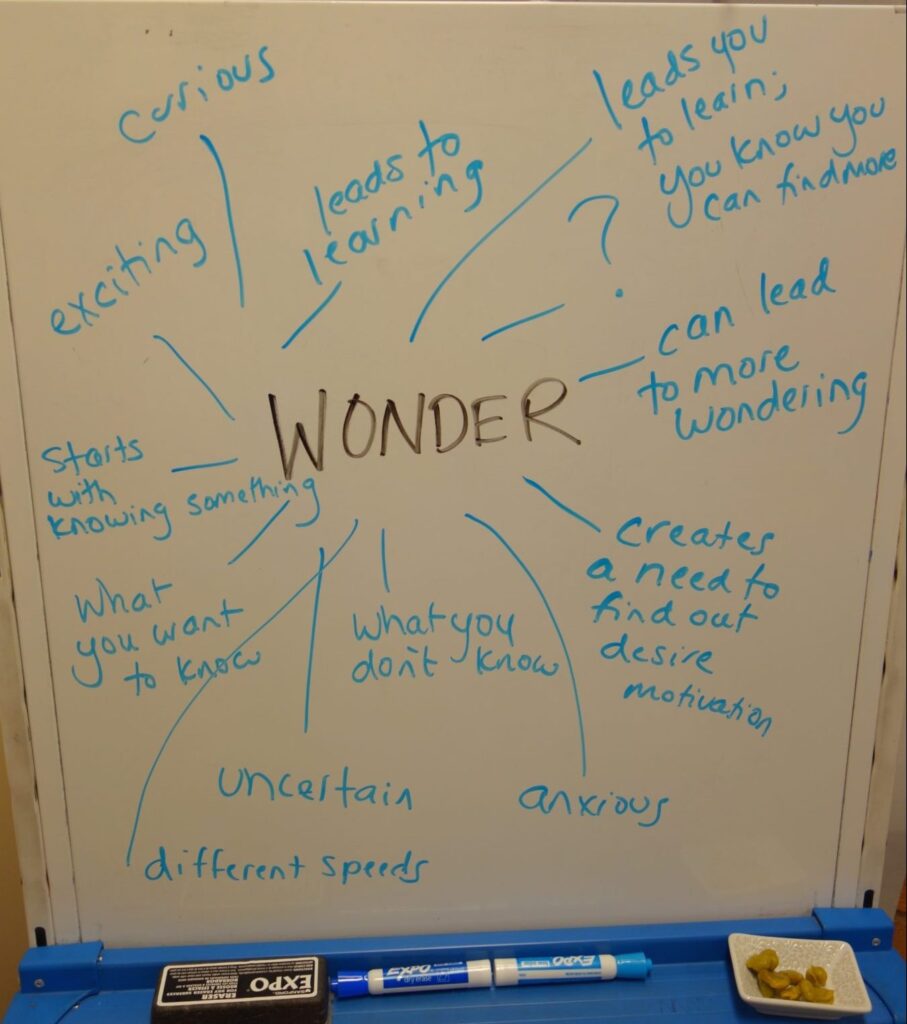
We drew the feeling of wonder with blackline pens and captured the color of wonder through color mixing and painting.
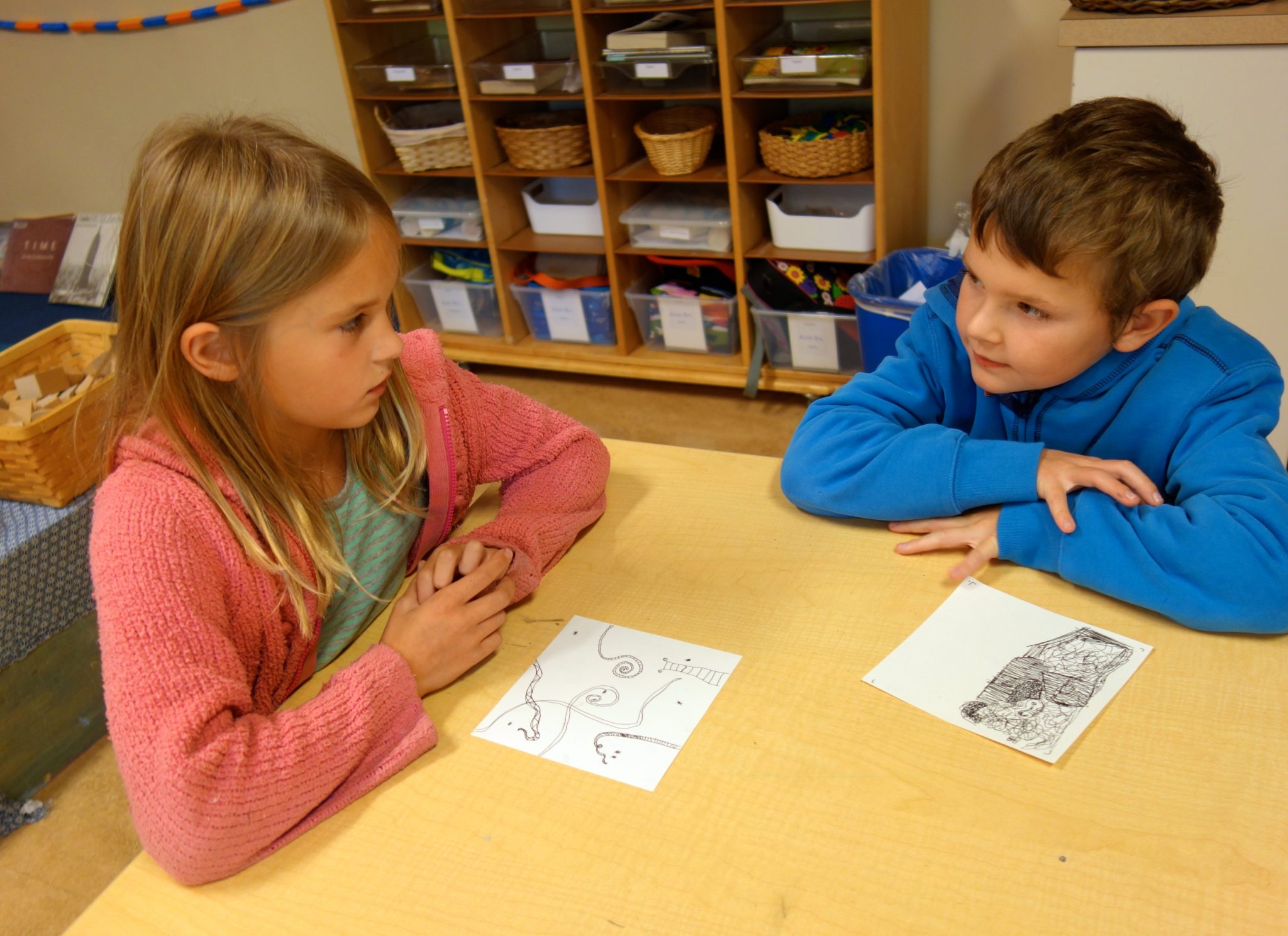
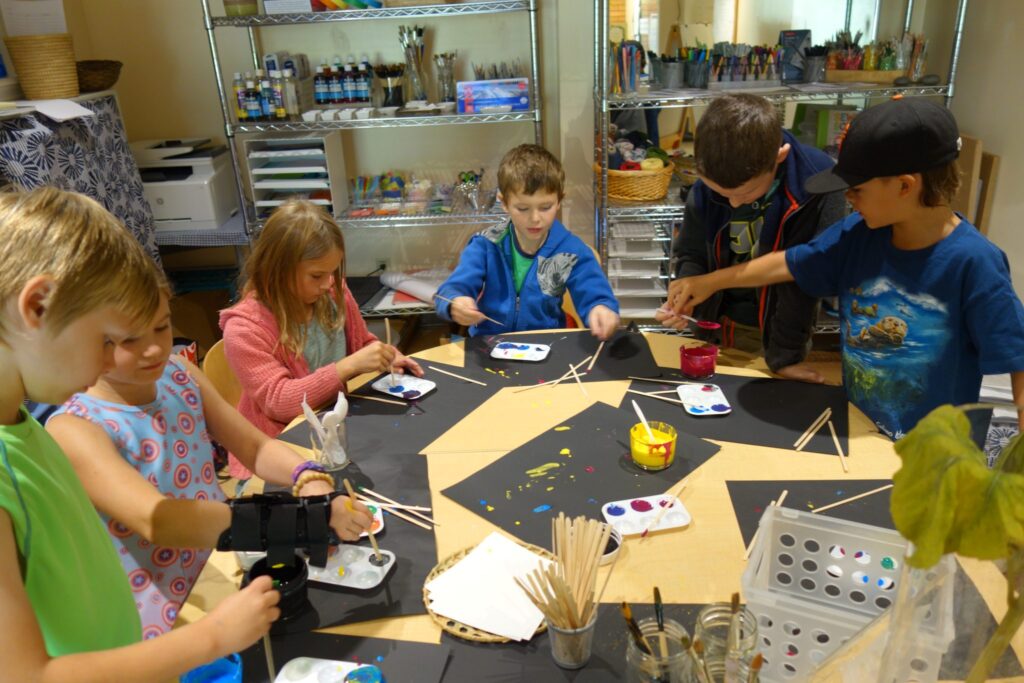
We went to the arboretum in search of wonder.
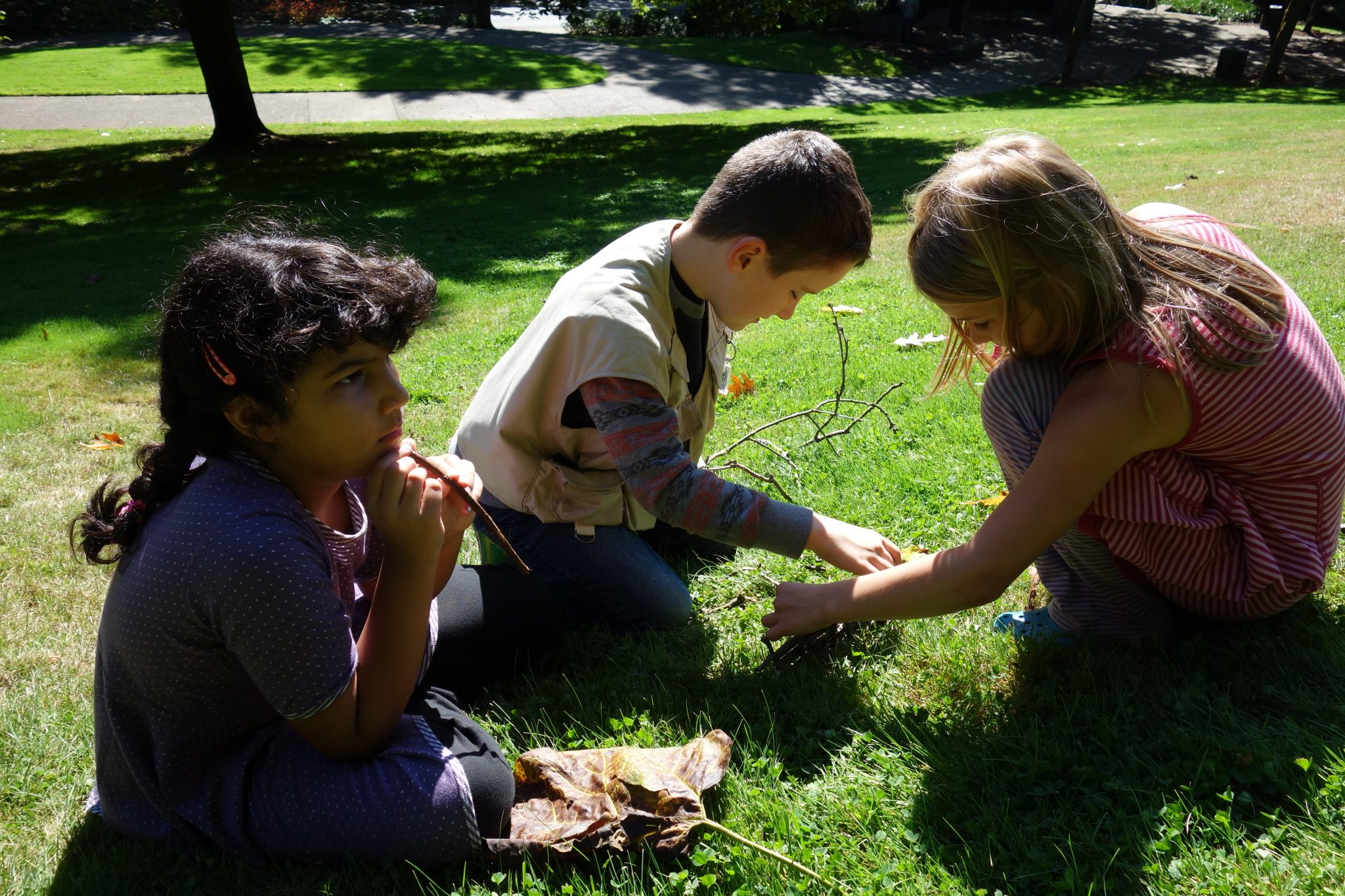
We slowed way down with a See-Think-Wonder thinking routine from Project Zero’s work with Visible Thinking. We also did a Question Starts routine to discover and get in the habit of using a greater variety of questions. We explored materials and played and talked and reflected in a variety of ways.
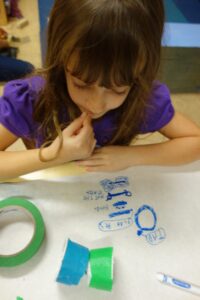
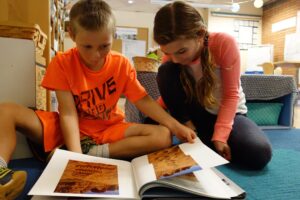
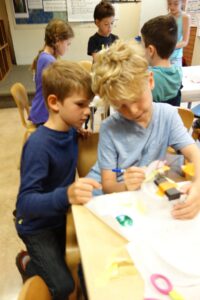
As time went on, I began to hear conversations that sounded more like this:
Anna: We’ve been doing new things and making discoveries every day.
Ruby: We’re all thinking and wondering.
Anna: We are all teachers and students. No one knows everything but people have always invented questions to figure out. You can learn from everyone and everyone can learn from you.
Mijonet: I have lots of wonderings too.
Seba: If you think and come up with questions, that makes new questions-
Jack: -and you might not be able to answer them all because when you answer a part a new question comes.
And:
Pasquale – You can explore more when you wonder. If I wasn’t wondering I couldn’t explore.
Syd – I discovered that wonder isn’t only one thing. It can be lots of things.
Sasha – Wonder is a feeling. You can’t see it – you can feel it.
Rowan – You can see wonder in someone else.
Taylor – When you are a baby you start wondering about everything. When you are child you wonder about what’s around you and that makes you learn more. You have to have wonder to learn.
Garland – An answer can make wonder – I figured out this and that gives me another question to figure out.
Ollie – Wonder is the answer – to figure out the puzzle you have to wonder – wonder is the key.
Taylor – Wonder is a key to understanding and learning
Anna – I discovered that there is a village inside your head and you get more and more ideas and wonderings just like the houses popping up. I also discovered that Wonder is different colors for different people but when you put them together it makes a beautiful rainbow of wonder – imagine all us coming together to wonder.
As our first month of school comes to a close, I am still full of wonderings about these children, our time together, and their relationship to uncertainty and wonder. I am not sure if it was the actual shared experiences that led the children to these words or an increase in comfort with uncertainty, with me, and with each other, or something else entirely. I am still wondering what else we can try to continue deepening our sense of wonder and of each other. How can we build a culture that recognizes the value of and enjoys lingering in uncertainty for longer? I find these initial first steps exciting and look forward to digging deeper and building higher. To use some of Anna’s words, what will happen when we all come together to wonder?
How about you? What are you wondering about in the beginning of the school year? How do you nurture a sense of wonder in your classroom environments? What happens when you bump into certainty?

Knowing these children after working with them for some time, I am so curious if they would connect to considering the relationship between curiosity and certainty, wonder and observation. It might be an interesting relationship to ponder with them through materials, too!
I wonder where this will lead your community next 😉
I’m curious how they might capture the feeling of certainty or the color of certainty in contrast to their ideas of wonder? And within a community, what does it feel like when another friend interacts with us guided by certainty or curiosity? How might these qualities impact our capacity for perspective taking: How much of a story might we miss or gain when we shift from one to the other? This search of wonder is firmly grounded in yesterday’s conversation about power and privilege (do I sound too certain?).